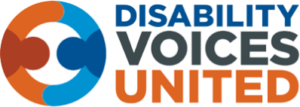Getting Communication Supports Through Your Child’s School
This information was taken from Disability Rights California (DRC) publication #7151.01. It was last updated October 1, 2019. For more information, visit DRC’s Self-Advocacy Publication Hub.
Disclaimer: These materials are based on the law at the time we write them. We try to update our materials; however, laws are regularly changing. If you want to make sure the law has not changed, contact DRC or another legal source.
1. What are communication supports?
“Communication supports” are device or services that can help a person with a disability to communicate. Communications supports are sometimes called Augmentative and Alternative Communication (AAC), or Special Adaptive Equipment. In the special education system, it is often called Assistive Technology (AT). Here are some examples of communication supports:
- JAWs and other types of screen readers;
- Dynavox and other Speech Generating Devices (SGDs);
- PECs and other forms of picture-based communication systems;
- Letter boards or alphabet boards;
- Documents in braille or large print;
- Services such as sign language interpreters or communication partners.
2. Do I have a right to get communication supports for my child through his or her school?
Yes. If your child attends a public school, communication supports can be included in the services that the school provides under the child’s Individualized Education Program (IEP) or accommodations plan (504 Plan). For example, if your child is not verbal, you may want to ask the school district to do an assessment. Depending on the result, the IEP team may decide that your child needs an assistive technology like a computerized communications device. The school is also responsible for providing training so that your child can use it effectively. If your child attends a private school, the school must provide communication supports as reasonable accommodations, unless they are unreasonably expensive considering the school’s overall budget.
3. What can I do if my child’s school does not provide me with the communication supports that my child needs?
If your child attends a public school, you can request an IEP meeting to talk about the issue and try to resolve it informally. If assistive technology is already part of your child’s IEP and the school is not providing it, you have the right to file a compliance complaint. If assistive technology is not in the IEP yet but you would like it to be and the school disagree, you can file for a due process hearing.
For more information about getting communication supports from a public school, see Disability Rights California’s fact sheet, Obtaining Assistive Technology Through Your Child’s School, available at https://www.disabilityrightsca.org/publications/obtaining-assistive-technology-through-your-childs-school
For more information about your child’s right to effective communication in public or private school, see, Disability Rights California, Disability Discrimination in Public and Private Schools, available at https://www.disabilityrightsca.org/publications/disability-discrimination-in-public-and-private-schools
Disability Rights California has prepared this fact sheet as part of the Communication Disabilities Access Network project. The project is intended to develop, train and activate a network of leaders to advocate for communication supports. It is funded by a grant from Ability Central, formerly known as the Disability Communications Fund. Ability Central supports programs and technology that benefit communication and access needs of Californians with disabilities. For more information, visit http://dcfund.us/



